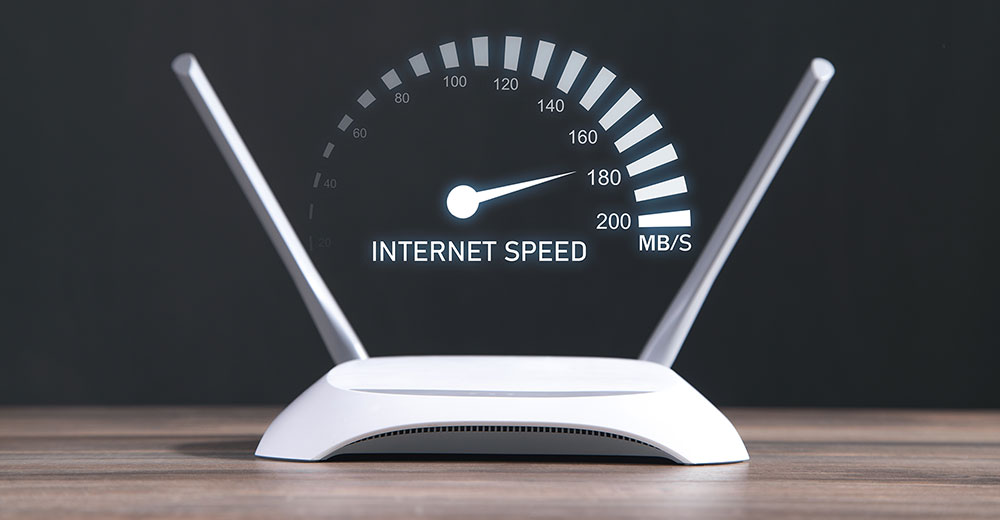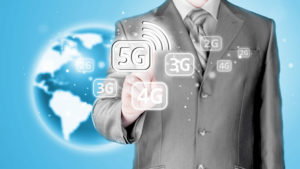Increasing numbers of connected devices in the home and greater consumption of streaming media are driving consumer demand for faster broadband speeds. Recent years have brought dramatic changes to the market as providers introduced greater service speeds, bundles, and pricing models in an attempt to address widespread consumer churn.
The service speed average among U.S. broadband households has increased steadily over the last four years. The most dramatic shift took place in the 100 Mbps — 999 Mbps tier, which almost doubled since midyear 2015 to become the most common tier (see chart below).
Growth came entirely from displacing speeds under 99 Mbps, driven by greater product availability, promotion and declining prices. Only 6 percent of U.S. broadband households currently have plans with speeds of 1 Gbps or higher.

Consumers Fuzzy About Speed
Many consumers are confused as to the speed of their current service. When asked, 39 percent of U.S. broadband households surveyed were unwilling to guess at their broadband speed, even when provided range bracket options. Consumers’ lack of awareness of their broadband speed is well documented and often cited by the industry as a challenge in upselling broadband services.
Lack of awareness of service speeds occurs for many reasons. Unlike their experiences with frequently purchased and clearly labeled products (e.g., octane ratings for gasoline purchases), consumers rarely encounter information about their broadband plans. Many consumers learn the details of their service plan only when they sign new service contracts (often every two years) or when they have a technical challenge.
Consumers who bought their service as part of a bundle may not have been aware of the speed, having been assured that it was sufficient or better for their requirements. Others may not have been part of the selection process or simply didn’t care to be informed of their speed.
Younger consumers and connected device owners are more likely to claim knowledge of their broadband speed than average subscribers. This is due primarily to greater broadband engagement levels, including encountering performance problems that cause them to seek out that information.
Broadband consumers are driven toward higher-speed plans by a combination of factors, including the following:
- Increased Device Penetration: While connected products bring convenience and peace of mind to consumers by enabling online media consumption, smart home automation, home security, energy management, and home monitoring, they also greatly increase consumers’ bandwidth needs.
- Multi-Person/User Households: Gigabit-speed services allow consumers to have dozens of concurrent high-speed sessions among connected devices within the home. In fact, for most homes, the number of concurrent, high-performance connections is a more relevant measure of the usefulness of gigabit-speed services than the actual speed of the connection.
- Lower Pricing: Service providers must be mindful of the structure of their service tier pricing, as large disparities between tiers will have a negative impact on upgrading or lead to churn as subscribers leave for lower-priced offers.
- Greater Streaming Media Consumption: Streaming media consumption remains one of the most bandwidth-consuming connected entertainment activities. Providers such as Netflix recommend a minimum of 3 Mbps to watch SD films and 5 Mbps for films in HD. Ultra HD 4K content requires at least 25 Mbps. These minimums are for a single device.
Homes with multiple users or ones that run many devices simultaneously quickly can exceed their data speed. Gigabit-speed services allowing consumers to have multiple concurrent high-speed sessions should be especially attractive to these households.
- Increased Telecommuting: U.S. telecommuting grew 115 percent in the past decade and now accounts for almost 3 percent of the workforce, according to Global Workplace Analytics. Home-based workers routinely engage in high data consumption activities — including receiving and sending large files and video conferencing — and may require additional connected devices. For these reasons, the FCC recommends a connection rate of at least 25 Mbps.
- Online Gaming: Gaming is an immensely popular activity, particularly among consumers under the age of 35. The migration from games played off discs to those played online, as well as the rapid rise of multiplayer games, directly impacts household data consumption. Online play typically needs a download speed of at least 3 Mbps and an upload speed of at least 1 Mbps per user.
Full Speed Ahead
In the second half of 2016, almost 60 percent of U.S. broadband households were likely to upgrade. By the end of 2018, that number declined to 48 percent. Equally concerning to service providers is the increase in the number of households unlikely to upgrade, which increased from less than one-quarter to almost one-third of households during the same time period. Decreasing interest levels can be attributed to a lack of compelling use cases and the growing availability of services in the 100-999 Mbps range.
As previously noted, intent varies by demographic or user group. For example, a strong correlation exists between the intention to upgrade and the number of OTT services a household engages. Subscription to one OTT service almost doubles the high likelihood (six or greater on a scale of one to seven) of upgrading to 1 Gbps.
Intent increases with each additional OTT service subscription, with 47 percent of subscribers with three or more OTT services very likely to upgrade, while only 16 percent said they were not likely to do so.
An inference can be drawn that the more a consumer has “invested” in OTT services, the greater the perceived risk of broadband challenges negatively impacting the user experience. Providers could capitalize on this sentiment by partnering with OTT providers to bundle complementary services.
In the short term, these findings present a challenge for gigabit services. Over a longer period, the situation will improve as consumers continue to increase their bandwidth-heavy activities (such as virtual reality-enabled gaming) and households become increasingly reliant on connectivity in the home.














































